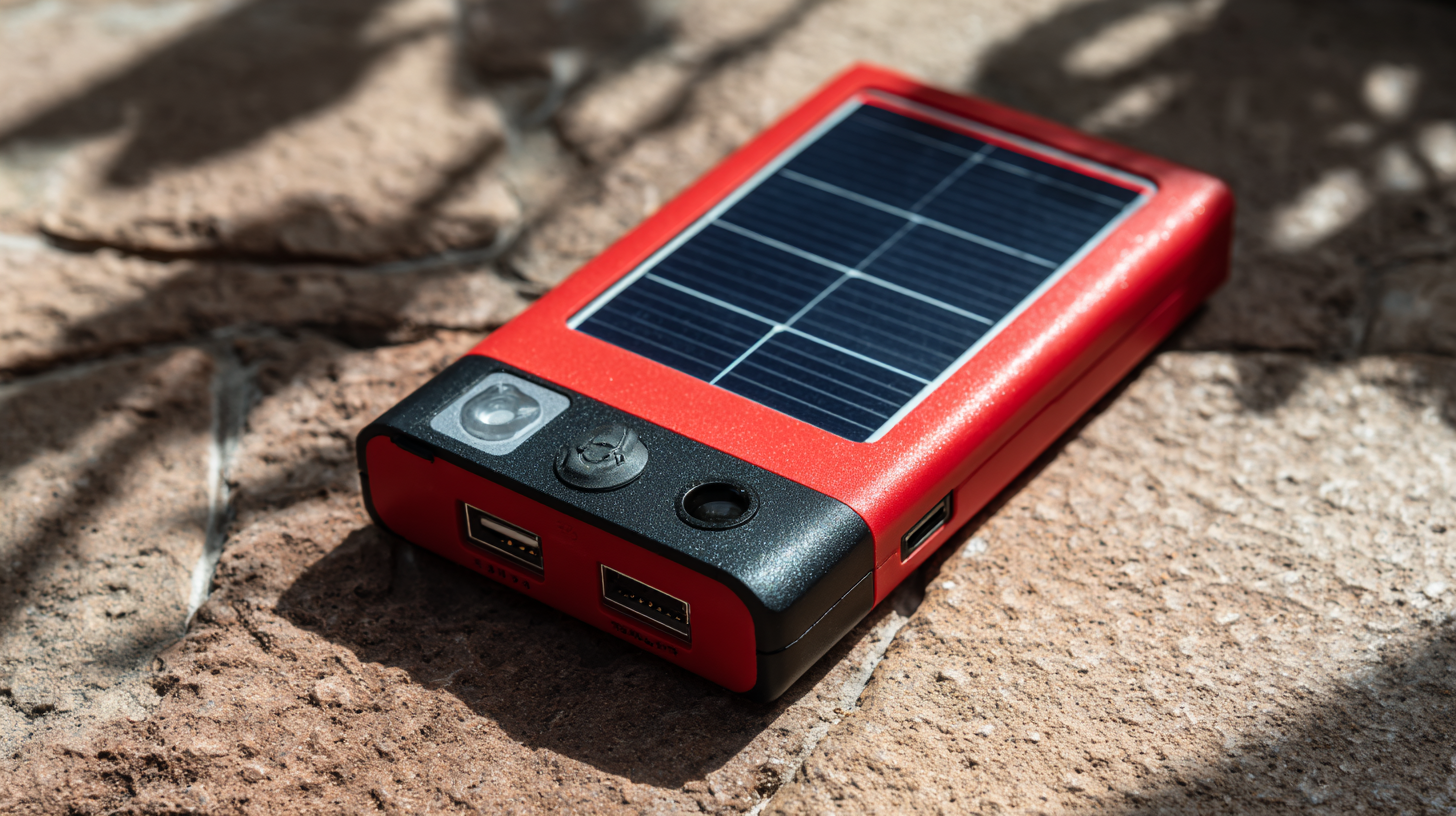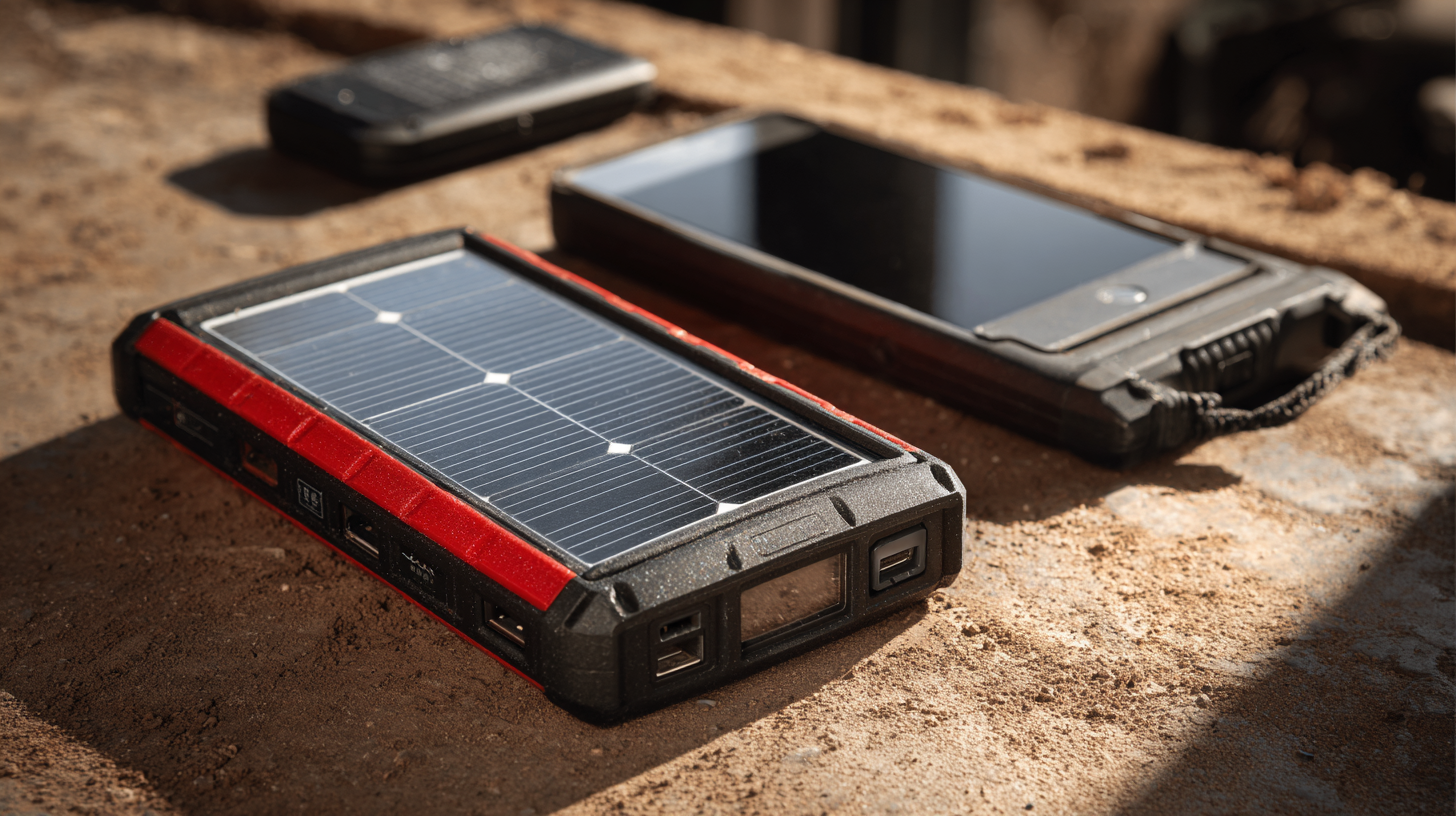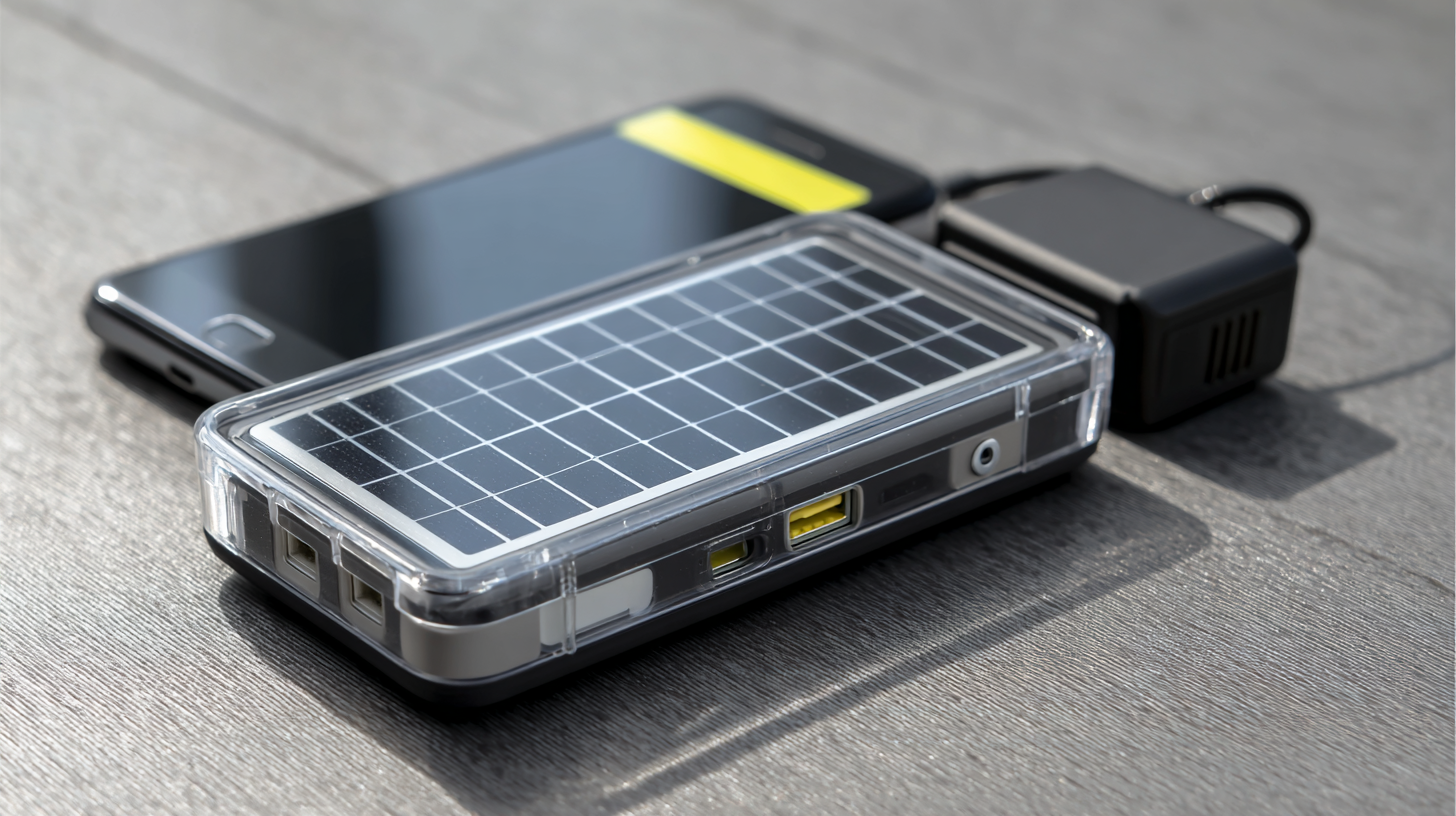
Ultimate Guide: Unveiling the Technical Specs of the Best Solar Power Bank for Global Buyers
In today's fast-paced world, where the need for sustainable energy solutions is on the rise, the Solar Power Bank has emerged as an essential gadget for eco-conscious consumers and adventurers alike. According to a recent report by Grand View Research, the global portable solar charger market is anticipated to reach USD 1.25 billion by 2025, driven by the increasing reliance on electronic devices in outdoor activities and emergencies. Not only do these innovative power banks provide a renewable energy source, but they also offer significant advantages in terms of after-sales service and lower repair costs, making them a smart investment for users around the globe. This ultimate guide aims to unveil the technical specifications of the best Solar Power Banks available, while also addressing essential aspects such as warranty services and maintenance costs, ensuring you make an informed purchasing decision.

Understanding Solar Power Banks: Key Technical Specifications That Matter
When choosing the best solar power bank, understanding key technical specifications is essential for making an informed decision. Start by considering the capacity, usually measured in milliamp hours (mAh). A higher capacity ensures your devices can be charged multiple times, making it vital for those on lengthy adventures or in remote areas. Look for models with at least 20,000 mAh for optimal performance, especially if you plan to charge multiple devices.
Another crucial spec is the solar charging efficiency. Not all solar panels are created equal; some are more efficient in converting sunlight into energy. Choosing a power bank with a high-efficiency solar panel, ideally over 22% conversion rate, allows for quicker charging times even under less-than-ideal sunlight conditions.
Tips: Opt for power banks with dual or triple USB outputs if you frequently charge several devices simultaneously. Additionally, consider the weight and size—while a larger battery may offer more power, it should still be portable enough for your needs. Lastly, durability is key; select models that are water and shock-resistant to withstand outdoor conditions.

Comparative Analysis of Capacity: How mAh Ratings Impact Performance and Usability
When selecting a solar power bank, understanding the mAh rating is crucial. This metric indicates the bank's capacity to store energy, influencing how much power it can provide to your devices. For instance, a portable unit with a capacity of 10,000 mAh can typically charge a smartphone up to three times, while a 20,000 mAh model may fully charge multiple devices and still retain some power for later use. Therefore, buyers should assess their daily power needs carefully when choosing the right capacity.
Tips for optimal usage include pairing your solar power bank with devices that have lower charging requirements, such as wireless earbuds or fitness trackers. This can extend the usability of your power bank significantly. Additionally, consider the solar charging efficiency; a bank that offers rapid charging under sunlight can save you valuable time when outdoors. It's also beneficial to check for dual charging capabilities—some models can charge via solar and USB simultaneously, ensuring you’re never out of power when you need it most.
Efficiency Metrics: Solar Conversion Rates and Real-World Usage Scenarios
When considering a solar power bank, efficiency metrics like solar conversion rates are crucial. In ideal conditions, high-quality solar power banks can achieve conversion rates ranging from 20% to 25%. This means that for every 100 watts of sunlight received, 20 to 25 watts can be harnessed and stored as energy. Factors affecting these rates include the quality of solar panels, angle of sunlight, and temperature levels. In real-world scenarios, the conversion rates can drop significantly, especially on cloudy days or during winter months, highlighting the importance of selecting a power bank that excels in various conditions.
Real-world usage scenarios further emphasize the significance of these metrics. For example, a traveler trekking through remote areas needs a reliable power source to charge devices. If the solar power bank has a conversion rate of only 10% under cloudy conditions, the user might find it nearly impossible to keep their devices powered throughout their journey. Conversely, a power bank with a robust design and optimized solar panels will ensure that users can maximize their energy intake, even when the sun isn’t shining brightly. Therefore, understanding solar conversion rates not only informs buyers about potential energy efficiency but also enhances their overall experience in diverse environments.
Solar Power Bank Efficiency Metrics
Durability Standards: Exploring IP Ratings and Impact Resistance in Solar Power Banks
When selecting a solar power bank, understanding durability standards is crucial. The Ingress Protection (IP) ratings indicate how well devices can withstand dust and water, which is vital for outdoor use. For instance, a power bank with an IP67 rating is completely dust-tight and can withstand immersion in water up to one meter for 30 minutes, making it ideal for rugged environments. According to a report by the Solar Energy Industries Association, the demand for durable solar power products has increased by 25% over the last two years, reflecting consumers’ focus on resilience.
 Moreover, impact resistance is another critical aspect to consider. Many solar power banks are subjected to rigorous tests, with many achieving military-grade standards (MIL-STD-810G). This certification ensures the device can endure drops and rough handling, which is essential for adventurers and outdoor enthusiasts. Data shows that consumers prefer products that not only provide power but also stand the test of time and harsh conditions.
Moreover, impact resistance is another critical aspect to consider. Many solar power banks are subjected to rigorous tests, with many achieving military-grade standards (MIL-STD-810G). This certification ensures the device can endure drops and rough handling, which is essential for adventurers and outdoor enthusiasts. Data shows that consumers prefer products that not only provide power but also stand the test of time and harsh conditions.
Tip: When choosing a solar power bank, look for those with high IP ratings and military-grade certifications to ensure you’re investing in a reliable and durable product.
Tip: Always check user reviews for real-world performance regarding durability, as manufacturer specifications may not always reflect everyday use conditions.
Charging Speed and Technology: Fast Charging Solutions and Compatibility Insights
When choosing a solar power bank, understanding charging speed and technology is crucial for maximizing efficiency and convenience. Modern solar power banks utilize advanced solar panels that generate higher energy conversion rates, allowing users to charge their devices faster than ever before. Factors such as solar panel type, surface area, and the angle of exposure contribute significantly to the overall charging speed. With many models now incorporating multiple USB ports and fast charging technology like Quick Charge or Power Delivery, you can recharge multiple devices simultaneously, making them ideal for travelers and outdoor enthusiasts.
Compatibility is another vital aspect that global buyers should consider. The best solar power banks are designed to work seamlessly with a variety of devices, including smartphones, tablets, and even some laptops. Look for power banks equipped with smart IC technology that can automatically detect the optimal charging current for different devices, ensuring safe and efficient charging. Moreover, features like waterproof and shockproof designs enhance durability, making these power banks reliable companions for any adventure. Whether you’re trekking through wilderness or relaxing at the beach, a high-quality solar power bank provides the energy you need without the frustration of slow charging speeds.
